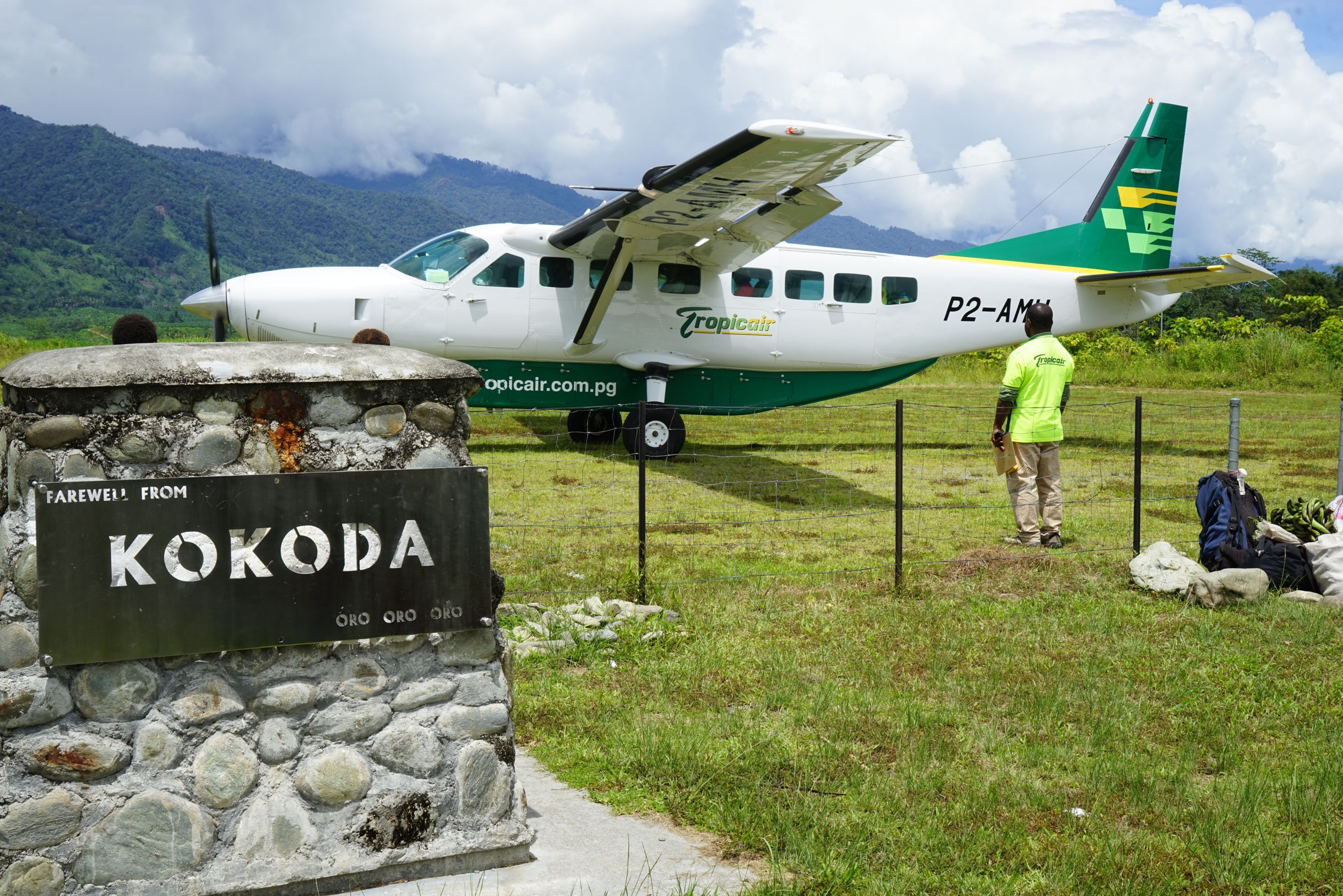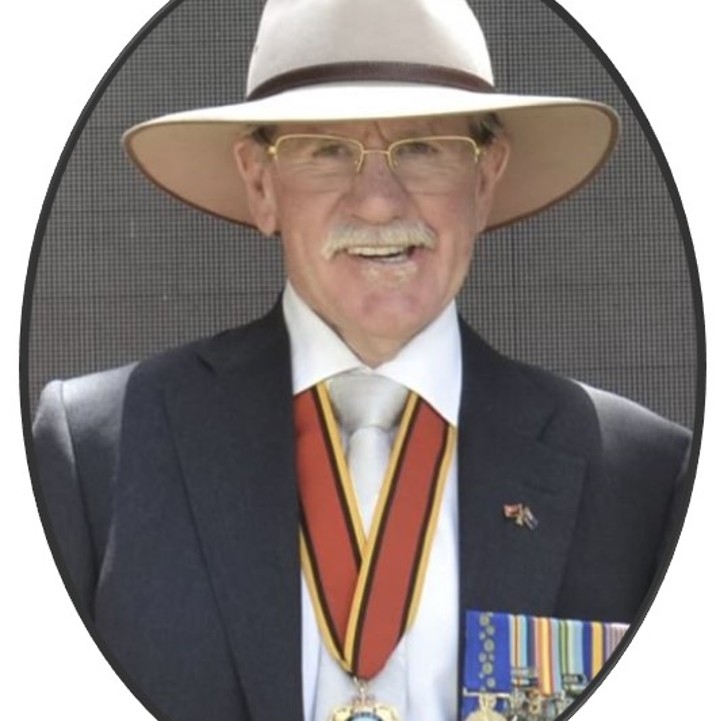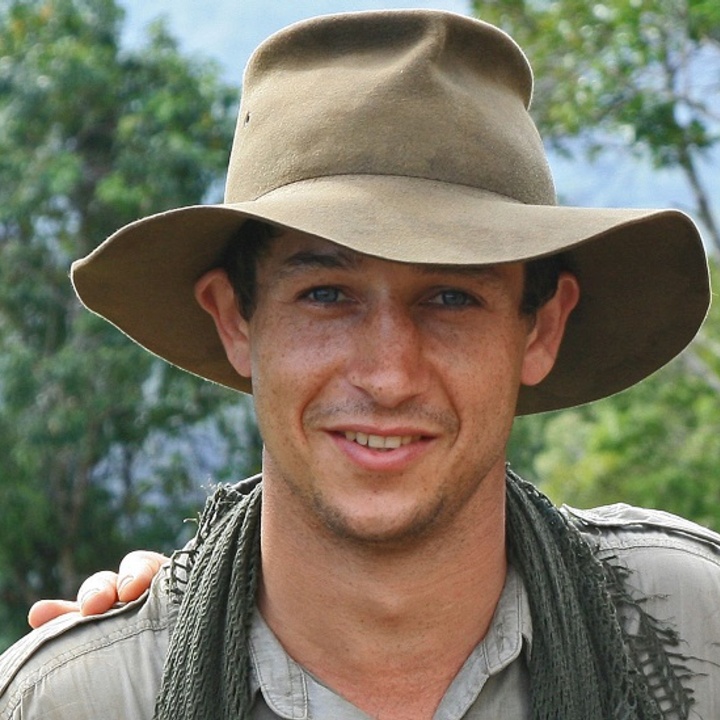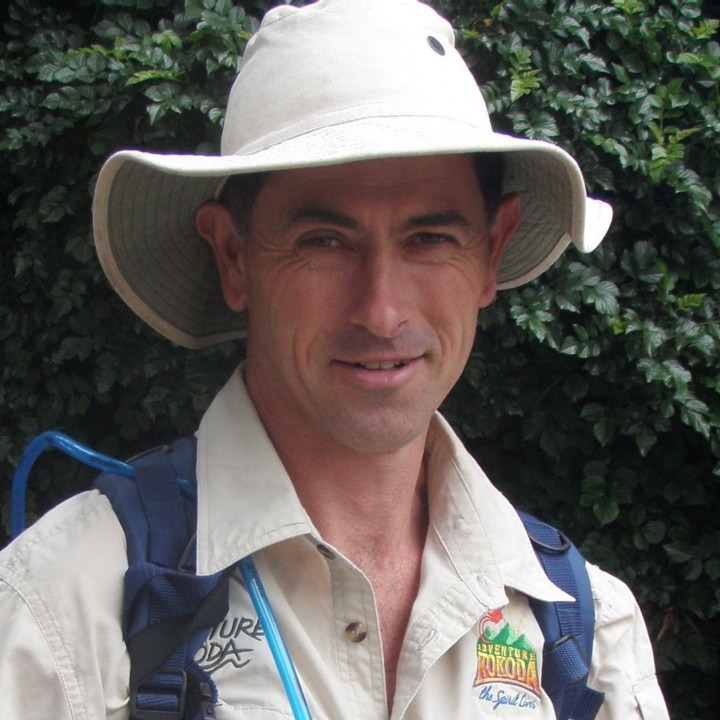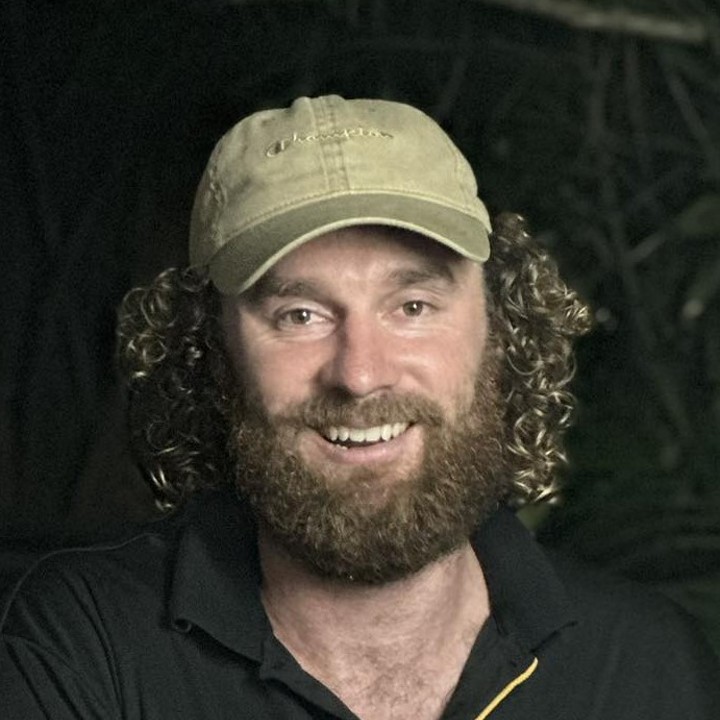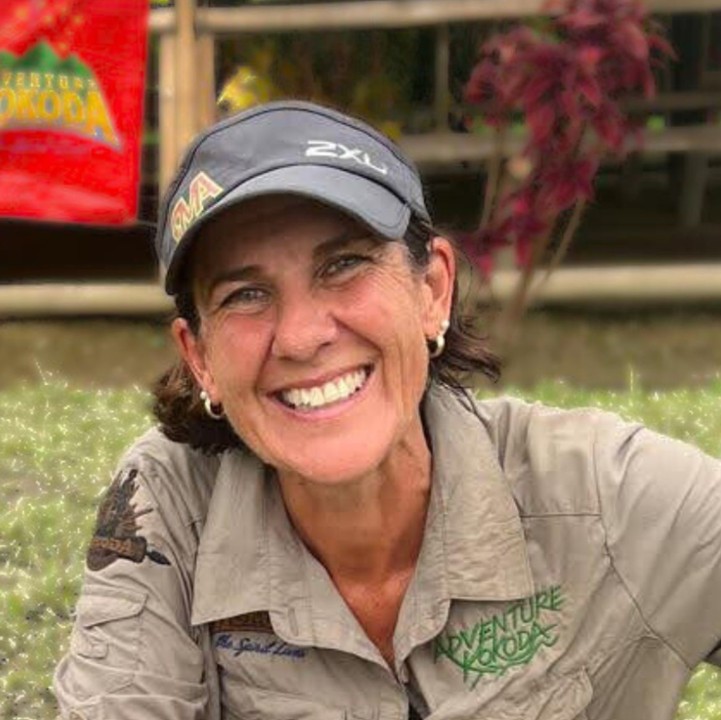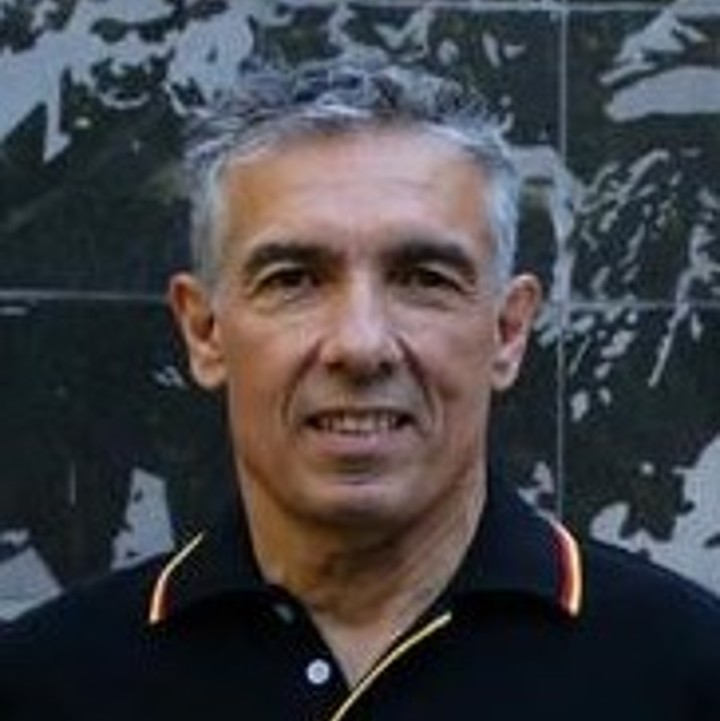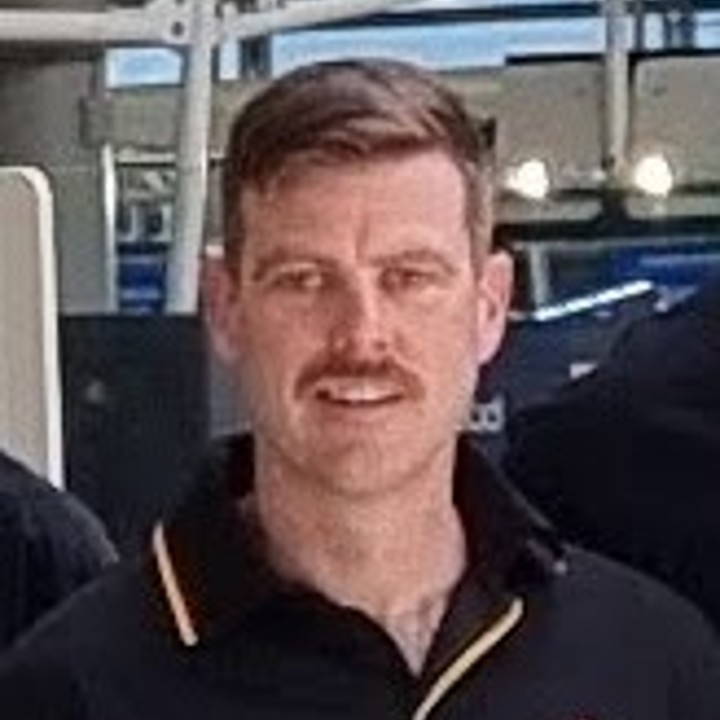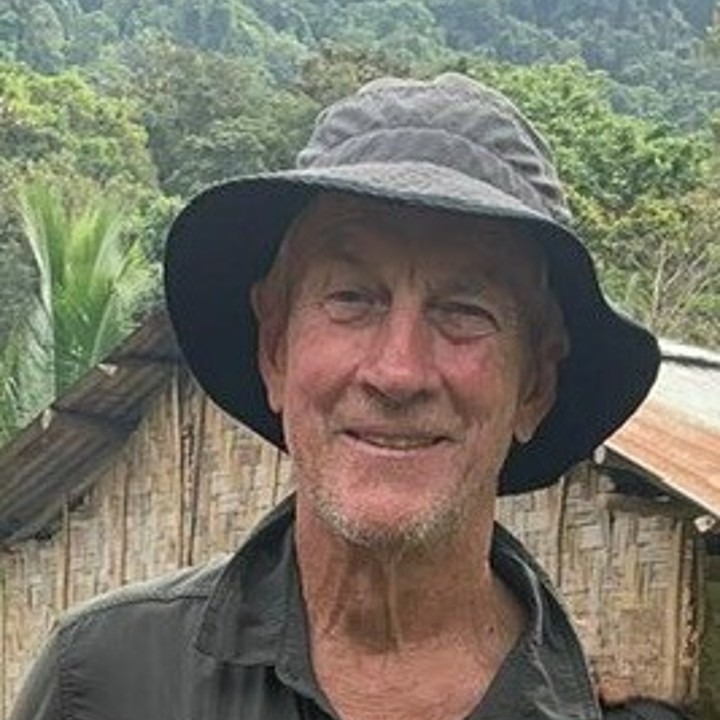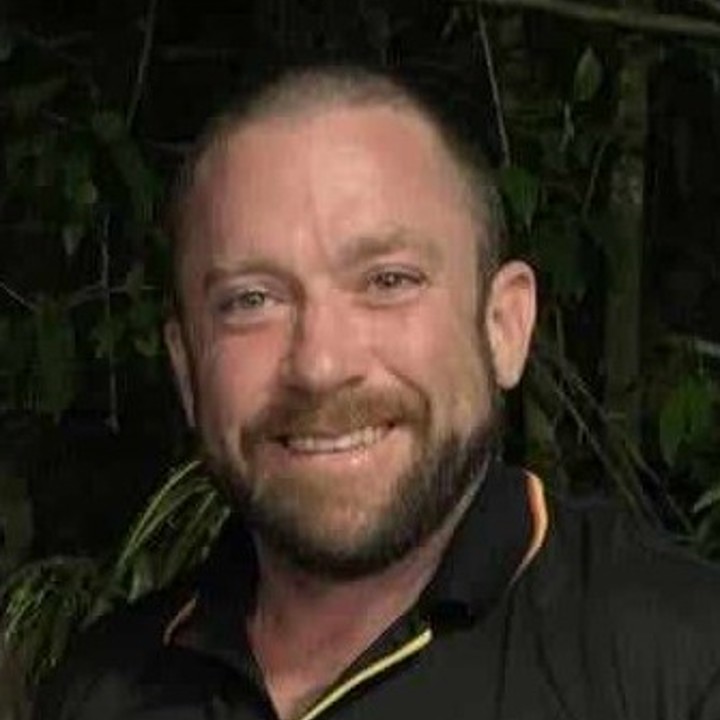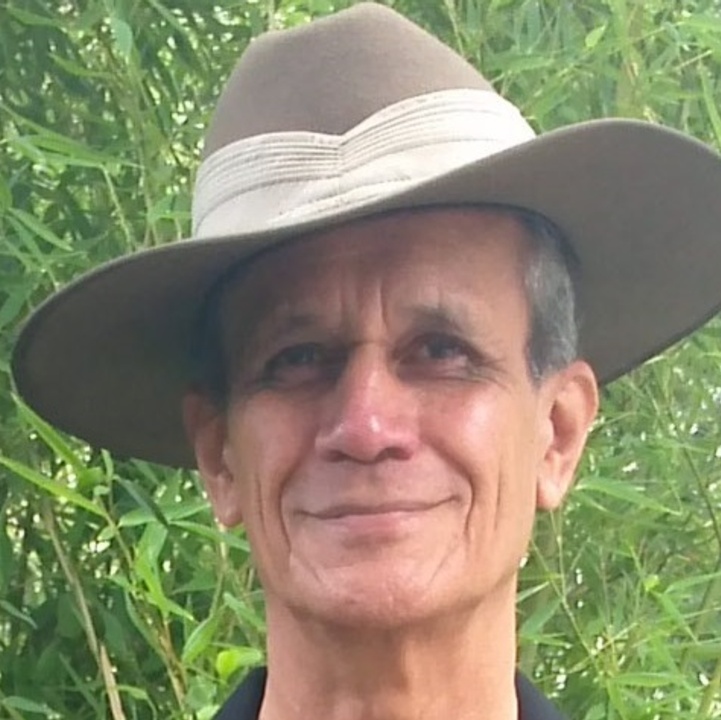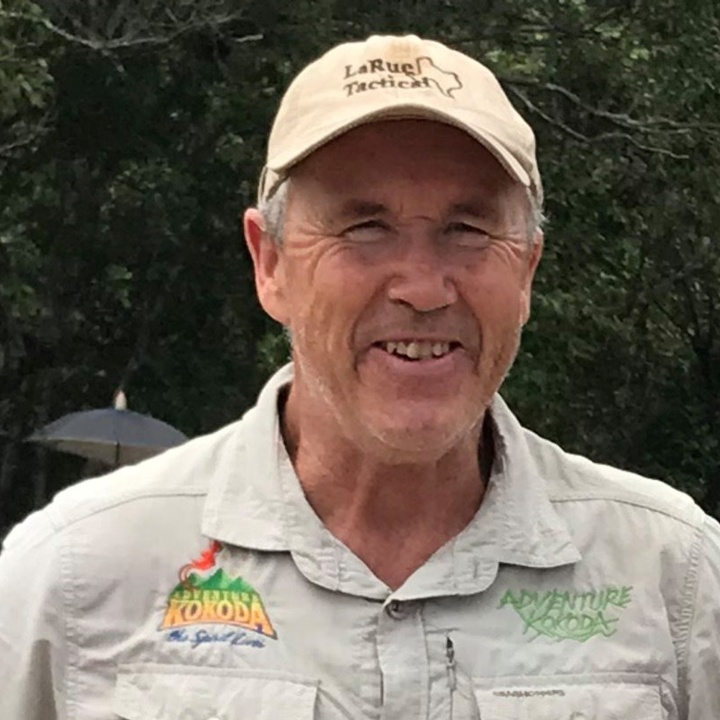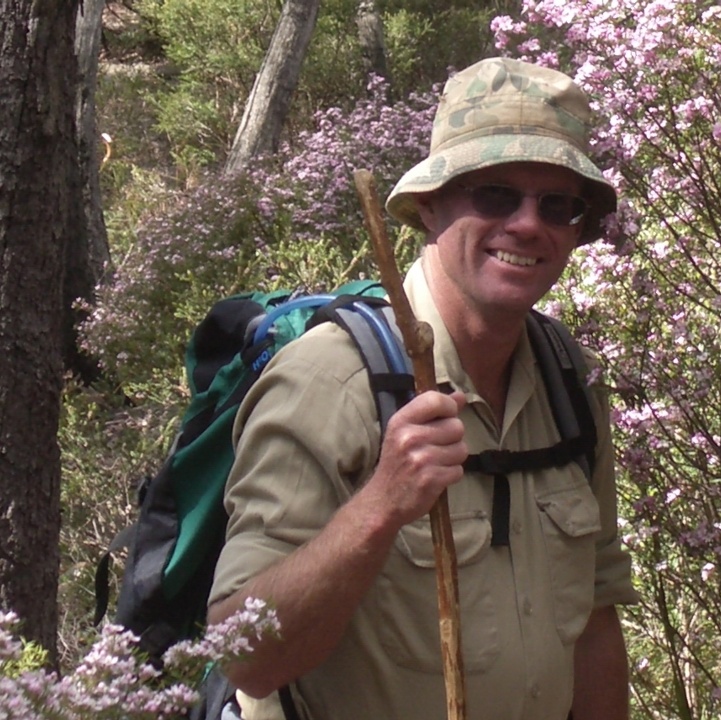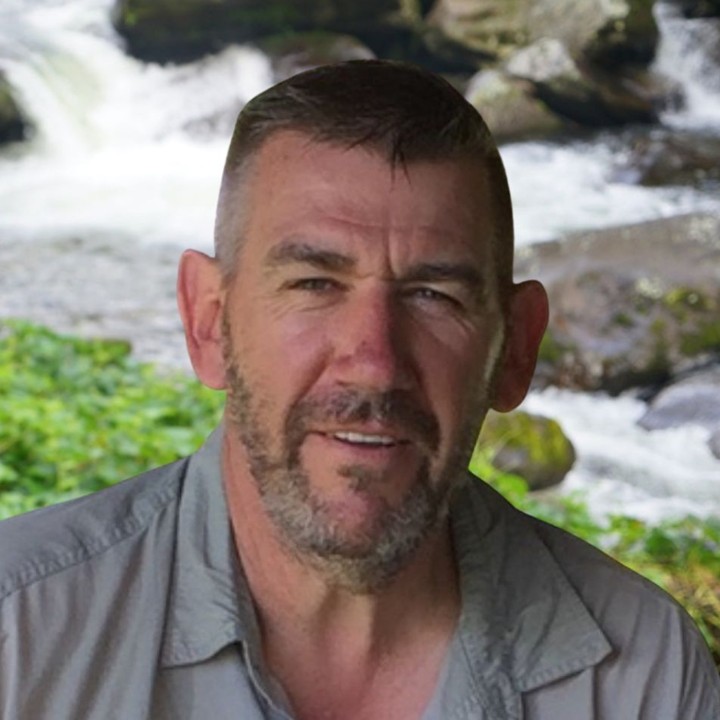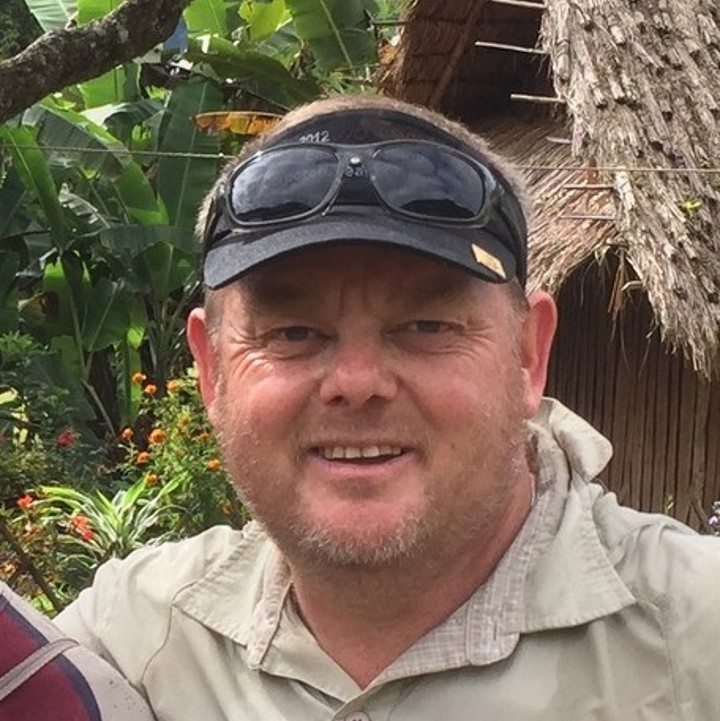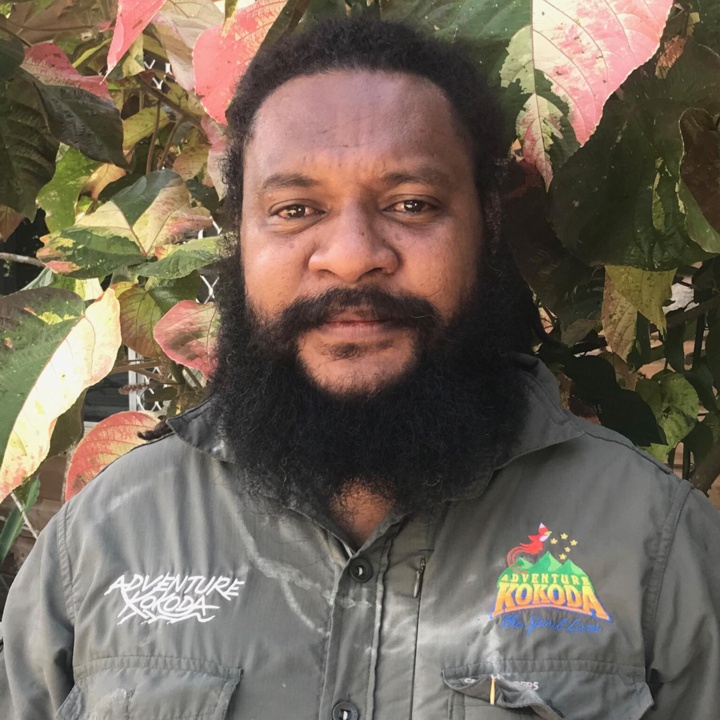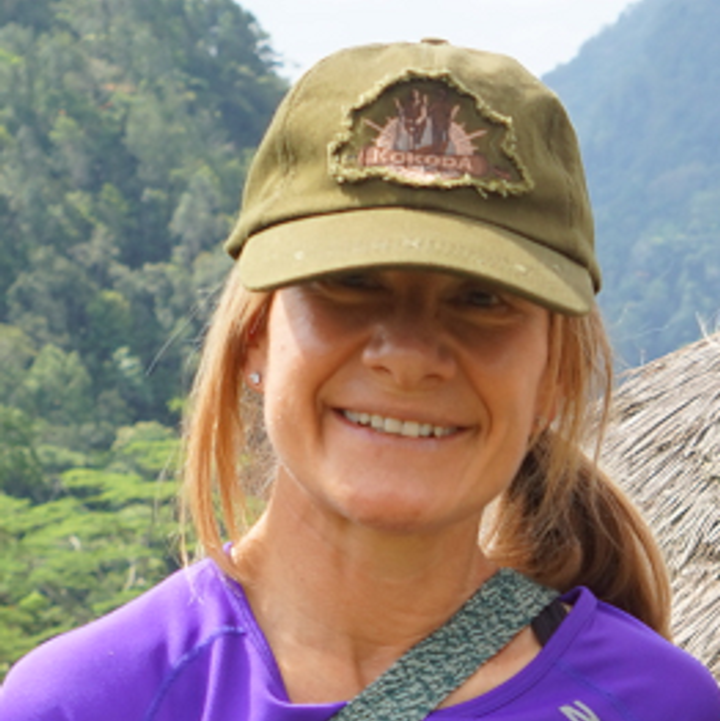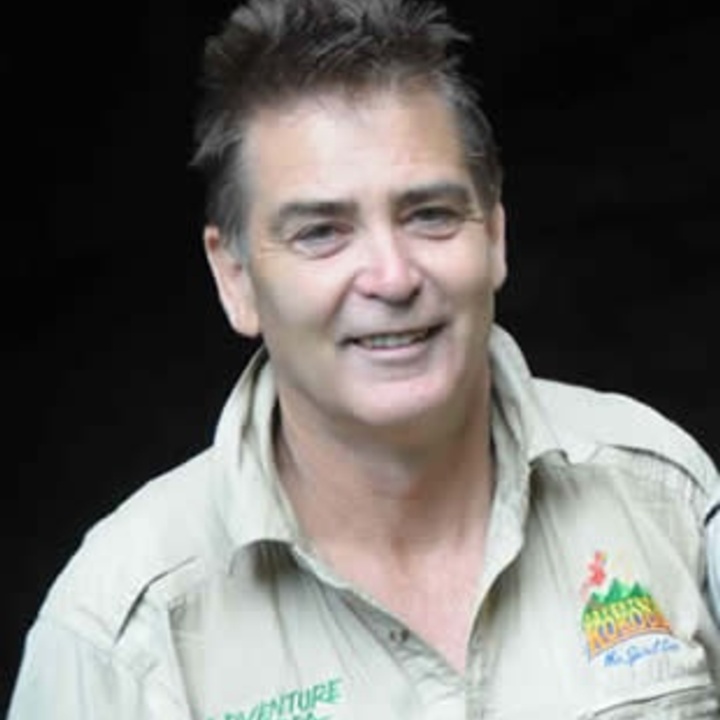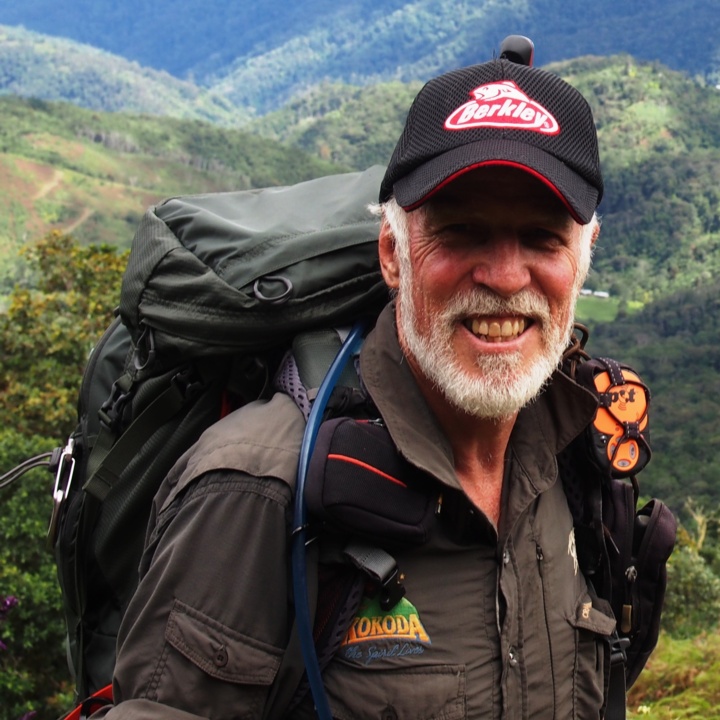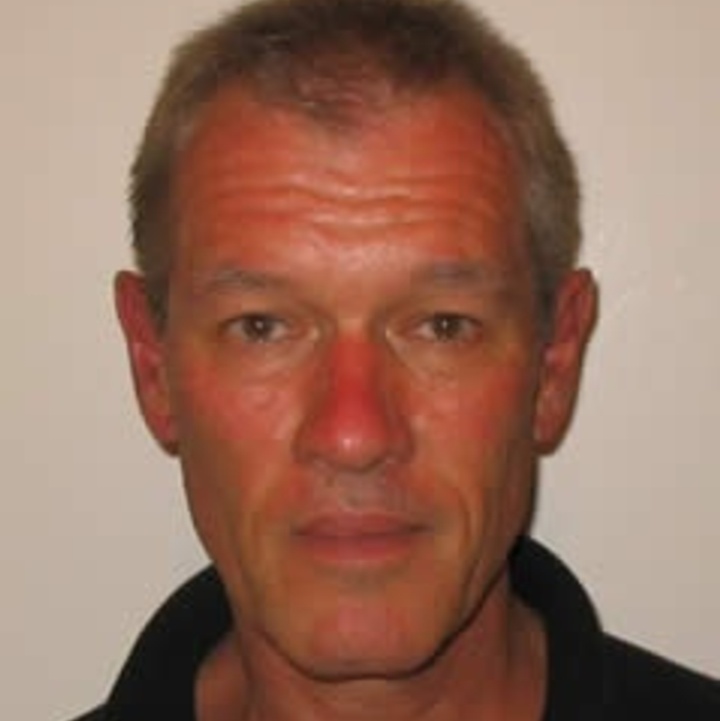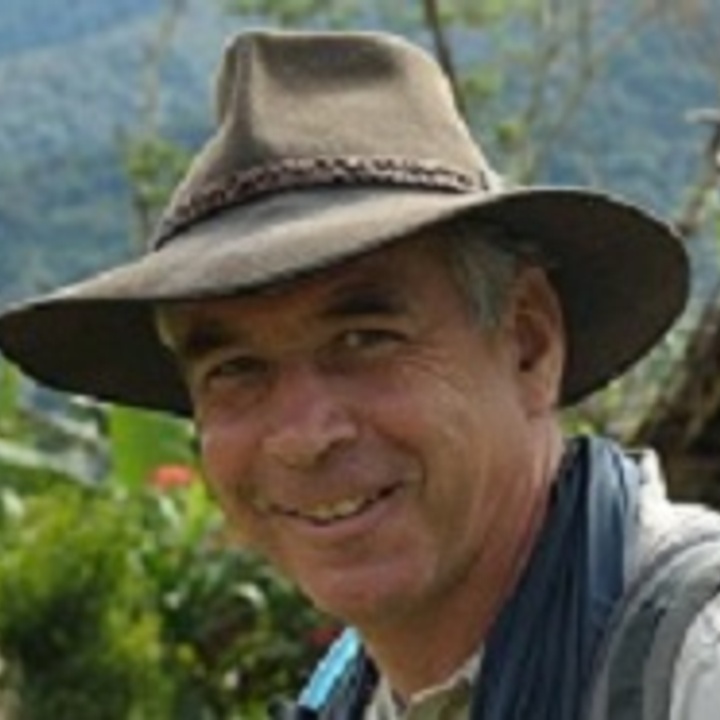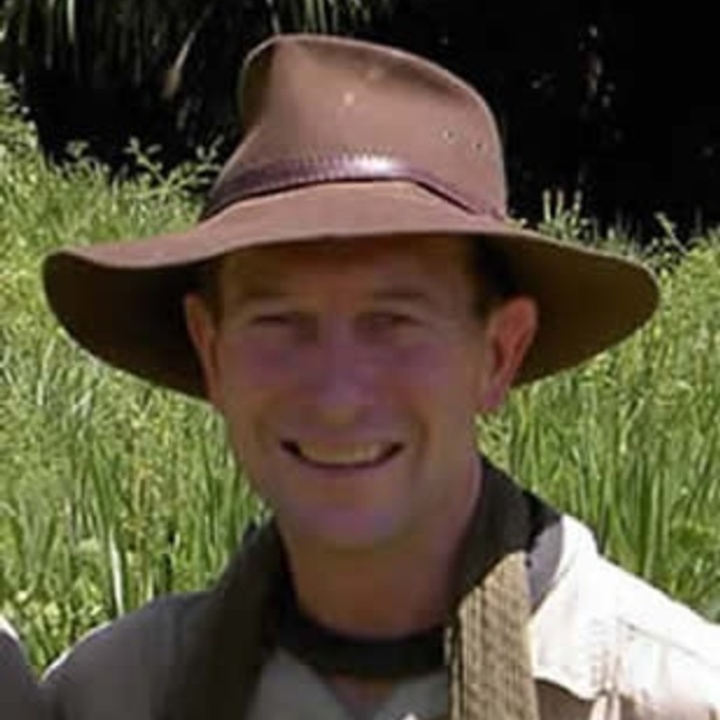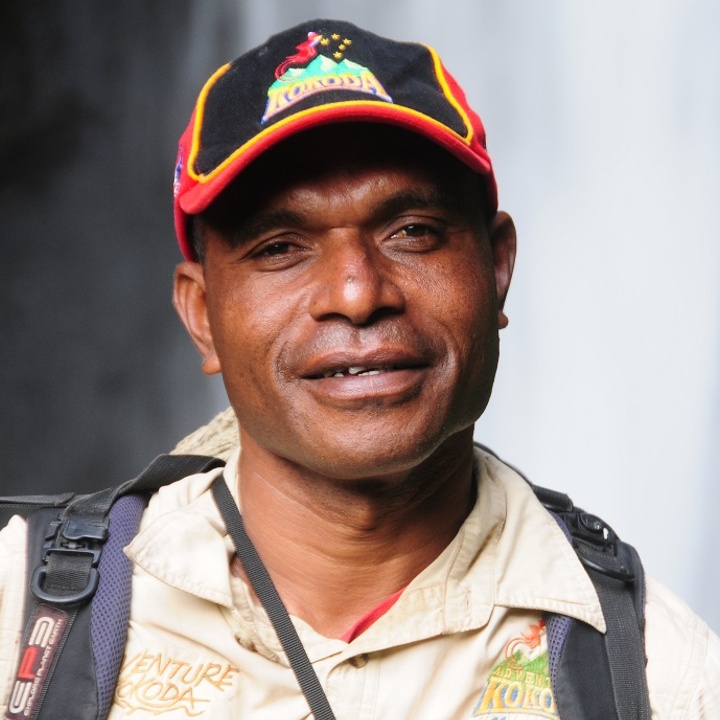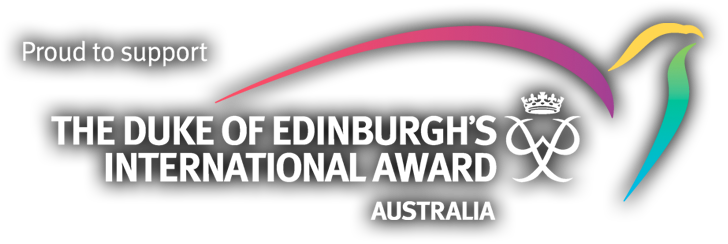
More than 700 young Australians from all walks of life have graduated from our Kokoda Youth Leadership Treks over the past decade.
Our Kokoda Youth Leadership Challenge was voted as the most outstanding youth leadership program at the Clubs NSW Annual Awards Dinner in 2017.
According to the judges of the award this program is without peer in the development of personal leadership qualities based on the enduring values of Kokoda.
Other schools who have used our Kokoda pilgrimages for leadership development are Kings School, Parramatta; Riverina Anglican College, Wagga Wagga; combined schools from the Hills District in Sydney; Penrith Panthers on the Prowl; Canberra PCYC and Lomandra School, Campbelltown.
Our Kokoda pilgrimages for schools are based on lessons learned from our own experience as graduates of the army Officer Cadet School, the Royal Military College and the Australian Command and Staff College. We draw upon the experiences of our Adventure Kokoda trek leaders who have a combined total of 160 years professional military service that includes combat experience in Vietnam, Afghanistan and Iraq.
During their pilgrimage students are disconnected from the travails of social media and reconnect with themselves, their fellow trekkers, the environment, the culture of the Koiari and Orokaiva villagers along the trail, and the wartime history of the Kokoda campaign.
We de-clutter the theory of leadership and get back to basics in a physically challenging isolated foreign environment where risk is real, personal commitment is required and teamwork is essential. And no matter how hard the going gets we are constantly able to reflect on the difficulties our young troops had in fighting their way across the trail against all the odds in 1942.
We stress that the relevance of the Kokoda pilgrimage is not about the glorification of war - it's about the commemoration of sacrifice. It's also a realistic demonstration of the ability of the human spirit to conquer adversity.
But most of all It's about Australian leadership!
'the art of influencing and directing men to achieve an assigned goal in such a way as to obtain their obedience, confidence, respect and loyal co-operation'.
Essential military leadership characteristics include:
-
Loyalty:
faithfulness to country, corps and unit, and to your seniors and subordinates.
-
Sense of Honour
(Integrity): Uprightness of character and soundness of moral principles, absolute truthfulness and honesty; fairness and impartiality in exercising command. -
Sense of Responsibility:
Consistent endeavour to discharge the responsibilities accepted as an officer.
-
Knowledge:
Acquired information, including professional knowledge and an understanding of your men.
-
Courage:
A mental quality that recognises fear of danger or criticism, but enables a man to proceed in the face of it with calmness and firmness.
-
Initiative:
Seeing what has to be done, and commencing a course of action, even in the absence of orders.
-
Decisiveness:
Ability to reach decisions promptly and to announce them in a clear, forceful manner.
-
Tact:
The ability to deal with others without creating offence, and show respect for individuals
. -
Dependability:
The certainty of the proper performance of duty.
-
Endurance: The mental and physical stamina measured by the ability to stand pain, fatigue, distress and hardship.
-
Enthusiasm:
The display of sincere interest and exuberance in the performance of duty.
-
Unselfishness:
Avoidance of providing for one's comfort and personal advancement at the expense of others.
-
Bearing:
Creating a favourable impression in carriage, appearance and personal conduct at all times.
The Aims of Military Leadership are:
- Primary Aim: Accomplishment of the mission.
- Secondary Aim: Welfare of the men.
Military Leadership Principles are guides for the proper exercise of command:
- Be technically and tactically proficient.
- Know yourself and seek self-improvement.
- Know your men and lookout for their welfare.
- Keep your men informed.
- Set the example by deeds, not words.
- Ensure that the task is understood, supervised and accomplished.
- Train your men as a team.
- Make sound and timely decisions.
- Develop a sense of responsibility amongs subordinates.
- Employ your command in accordance with its capabilities.
- Seek responsibility and take responsibility for your actions.
- Make the primary mission the combat efficiency of your command.
Military Leadership Techniques are actions given by the leader. Each technique should:
- Be guided by the leadership principles.
- Exhibit the characteristics of a leader.
- Be consistent with the situation.
- Contribute towards achieving the goal.
Combat Efficiency was described as the ability of the unit to accomplish an assigned mission in the shortest possible time with the minimum loss of life and waste of material.
Indications of Military Leadership are:
- Morale:
an attitude of confidence in the mind of an individual when he identifies himself with a group, accepts group goals and works hard to achieve them.
- Discipline:
the prompt obedience to orders and, in the absence of orders, the initiation of appropriate action.
- Esprit De Corps:
the loyalty to, pride in, and enthusiasm for a unit shown by the members of that unit.
- Proficiency:
the technical, tactical and physical ability to do a job well.
Some 50 years on the gender of our language has changed but the principles and techniques remain the same.
By day 5 . . .
'The years I spent in war were the happiest I ever spent. I shared a task with men of every type and every social station and was admitted to a fellowship so rare as to almost justify the beastliness that made it possible. There is this to be said of war: you live simply if at all, and you do it in the company of men at their very best, spurred to a passionate unselfishness by a common purpose which at all other times is lacking'.
Around the campfire our trek leaders will discuss the '3+1 Rules of Survival' and various theories of leadership based on our own experiences: the army 'Group' theory based on the premise that he or she who wears the rank is not necessarily the leader; 'Command' leadership relevant to combat situations; 'Situational Leadership' which is the ability to shift behaviour according to the demands of the situation. We discuss the characteristics of effective team leadership which encompasses the natural mix of decisive action people, thinkers and carers.
By this stage the group are no longer strangers and are beginning to develop strong bonds of friendship. They now have an appreciation of the term 'Esprit de Corps' which wartime historian, Dudley McCarthy, attributed to another young group of strangers, the 39th Militia Battalion:
'Although possessing no permanent site, having neither roof nor walls, no unchanging form, it yet becomes home for those who serve in it. Away from it, each of its members can revert to being homeless individuals, lost uncertain, without proper identity. Because of this it calls to life in a man, rounded into fullness through shared battle, suffering and death, each other will always feel some sense of brotherhood for each other man of his battalion. Through this thing the strong lift the weak to efforts and achievements beyond their own strength and their conscious wills, and the dependence of the weak gives greater strength and endurance to the strong. For every individual human part of this battalion who is killed, this thing changes something in those who survive and calls to life something new that never was there before'.
Students then retire to think about a leader who has inspired them in their lives thus far - a parent, a teacher, a coach, a friend. Later in the day they return to the group and tell us about that person and the values they have and the qualities they exhibit that inspires them as a role model.
We then share a view on leadership from an old mentor:
‘From long experience I have learned the importance of knowing the capacities of my people. I view each person as an individual with strong and weak points. I have considered opinion about the strengths and limitations of each person and the responsibilities each will probably be able to handle best. In a general way I know when it will be safe to let a person ‘have his or her lead’ and when to ‘tighten the reins’. I consider it is part of my job to provide conditions that will allow my people to perform at their best.
‘I have learned to watch for signs that a person may be reaching breaking point, particularly during prolonged periods of stress. When I sense a person to be reaching breaking point I arrange for their relief as tactfully as possible.
‘I follow the practice of pushing decision making as far down the organization as it should reasonably go. For example, I give most of the problems that come to my desk to people who I think should handle them. Usually I do not comment on these problems in advance even though I usually have my ideas on how they should work.
‘I try to avoid making commitments that involve my people without their knowledge. I recognize it is tempting to promise people they will get everything they ask for. Instead I take note and promise that their request will be looked into, and that they will get it unless a good reason exists.
‘I have learned to be especially careful in one aspect of my actions. I have found that people are highly sensitive to anything a boss says or does. I have found that even the most vague speculations about possible actions can cause my entire organization to shift into high gear. Accordingly, I learned long ago not to throw off any chance remarks which might be construed to be subtle directives.
‘Despite my calculated reserve I am constantly tempted to tell employees how things should be done. I have a reputation for getting to the root of problems and, of course, I like seeing things done according to my own preferences. However, I am convinced that much of my effectiveness depends upon resisting this temptation. I have found that this restraint has resulted in my people getting high satisfaction from their own jobs. I believe that this is also why I have developed a reputation for always having my people ‘behind me’.
‘I have learned to use my people as a team. I encourage ideas and suggestions from everyone concerned, not only by saying so, but also by making sure that those who ‘stick their necks out’ do not feel threatened by their or others’; comments.
‘I insist that my people clear their ideas with each other before coming to me. I recognize that most problems will involve the activities of more than one branch or section.
‘I am concerned about the development of my entire organization and I make effort in this direction. I make it a specific responsibility of supervisors to bring on their employees. I encourage supervisors, for example, to invite selected employees to conferences where the latter can make a contribution or learn something relevant to their own work.
‘I believe that written directions or memoranda are most useful when they summarize or record concepts that have already been discussed.
‘I have found that the idea within which employees can act on their own initiative needs defining. I therefore keep in touch with my people so that I can show them where they are in over their heads. I don’t hesitate to tell them when they have failed – I do so plainly but in a way which stresses how such mistakes can be avoided in the future and how they can profit from them.’
What's included
- Meals
- All transportation
- All accommodation
- All trek fees
- Mosquito-proof tents
Trek Itinerary
- Day 1: Flight to Port Moresby
- Day 2: Sogeri - Owers Corner - Imita Base
- Day 3: Imita Base to Ofi Creek
- Day 4: Ofi Creek to Agulogo Creek
- Day 5: Agulogo Creek to Efogi Village
- Day 6: Efogi Village to Bomber's Campsite
- Day 8: Bomber's Campsite to Templeton's Crossing
- Day 7: Explore Lake Myola from Bomber's Campsite
- Day 9: Templeton's Crossing to Isurava via Abuari Village
- Day 10: Isurava to Hoi Village
- Day 11: Hoi Village - Kokoda - Bomana War Cemetery - Hotel
- Day 12: Return flight to Australia
Dates & Availability for Kokoda Pilgrimages for Schools
Photos from the Kokoda Pilgrimages for Schools
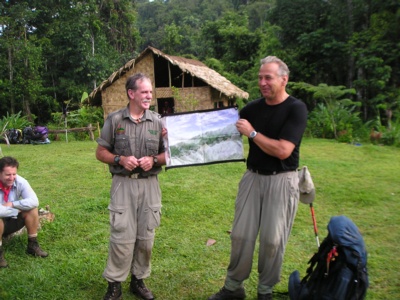
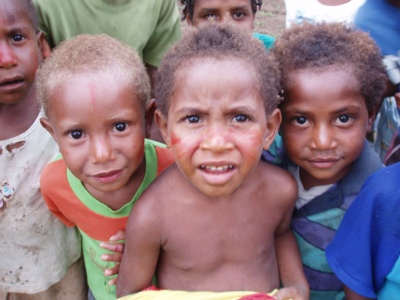
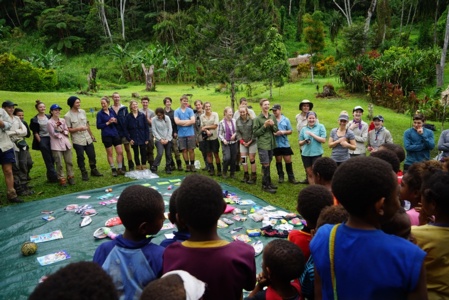
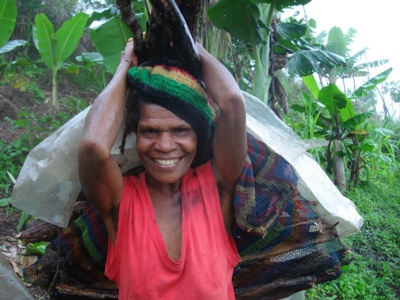
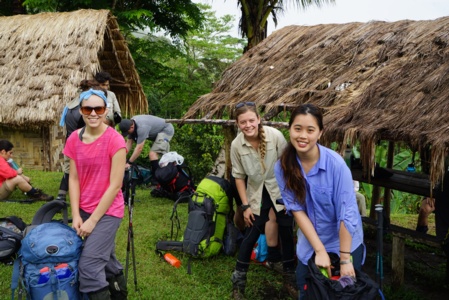
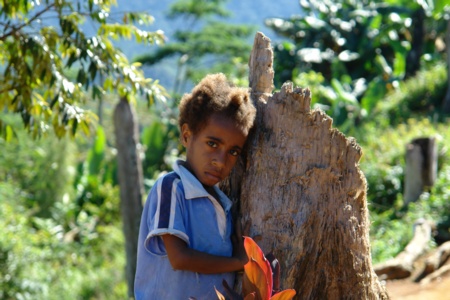
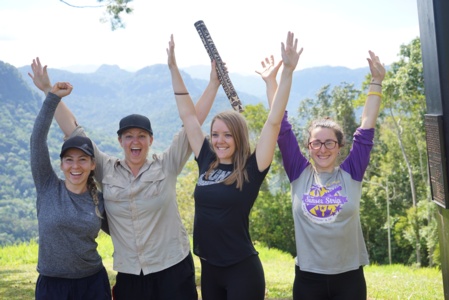
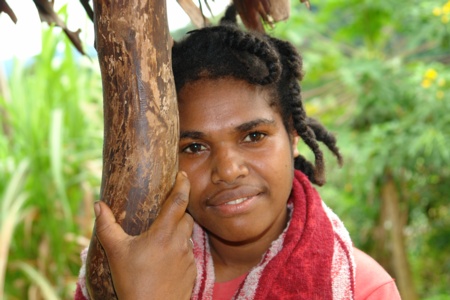
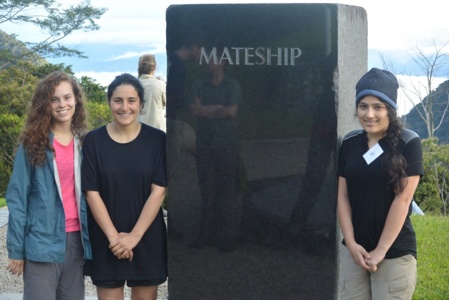
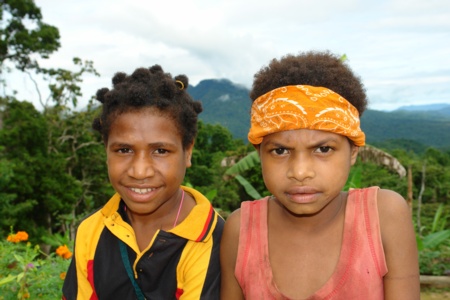
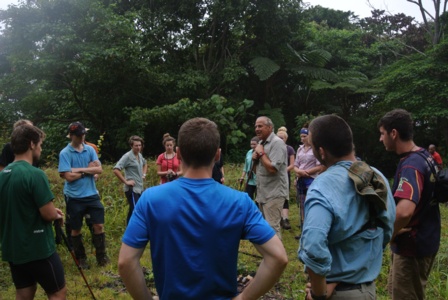
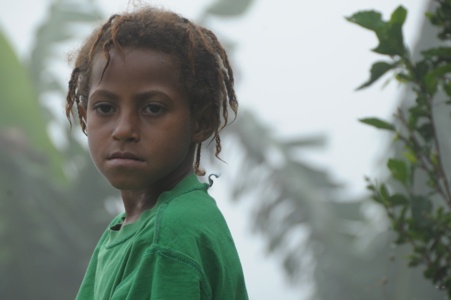
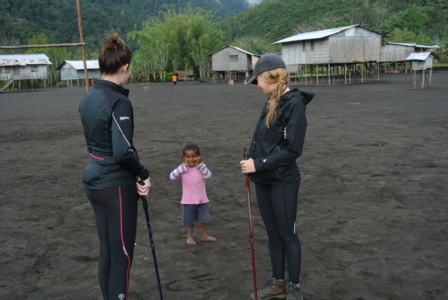
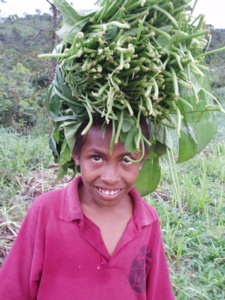
FAQs about this trek
When planning a trek across the Kokoda Trail the most common questions we get relate to safety.
The Kokoda Trail is a rugged and remote 138 kilometre jungle path across some of the most hazardous terrain most people will ever traverse. The trail itself can be quite dangerous with steep jungle clad mountains and swift-flowing rivers/creeks strewn with large rocky boulders. Much of the area is inaccessible by helicopter. Rivers and creeks can rise rapidly after heavy rain in the catchment area and can be dangerous to cross.
In order to minimise risk it is therefore essential to trek with a reputable Kokoda tour company.
If an emergency occurs it is vital that your trek leader is experienced and capable of handling the situation. It is essential that they are equipped with a satellite phone and VHF radio with a reliable back-to-base line of communication that maintains a 24/7 listening watch in Port Moresby.
As a trekker you need to ensure you are protected with a personal Travel Insurance policy to cover your medical evacuation and treatment costs should you become sick or suffer a personal injury. It is your responsibility to ensure the insurer you select will approve immediate helicopter evacuation from the Kokoda Trail if the call is made by your trek leader.
You also need to ensure the operator you choose to trek with has suitable Public Liability Insurance protection. If they don't have it don't even think about trekking with them.
You should not confuse Personal Travel Insurance (your responsibility) with Public Liability Insurance (your tour company's responsibility).
Adventure Kokoda only use trek guides and personal carriers from the Koiari and Orokaiva people who live along the trail. These are descendents of the famous 'fuzzy-wuzzy angels' who look after our trekkers just as their fathers looked after our diggers.
Our trek leaders are trained emergency evacuation procedures and are qualified in remote area first aid. They also carry satellite phones and VHF radios with direct links to our operational HQ in Port Moresby which is monitored 24/7 during our treks.
Adventure Kokoda is one of the few trekking companies to complete a comprehensive risk assessment of the trek and has been able to secure public liability insurance protection for trekkers as a result. The policy has a limit of A$10 million per claim.
Our good relationship formed over the past 33 years with our guides, carriers and the people living along the trail ensures our trekkers have safe passage.
According to reports we receive we are the only Kokoda tour company operator to provide nutritious fresh meals during our treks.
Over the years we have trained our PNG support crews to prepare, cook and serve meals and this has proved to be a most attractive option to trekkers. Life is too short for ration packs!
Our menu includes breakfast cereals, tropical fruits, biscuits, jam-vegemite-nutella-peanut butter-cheese, pasta, noodles, rice, meat and vegetables with potato, tea/coffee/hot chocolate etc as standard fare.
We are also able to provide for special diets as required.
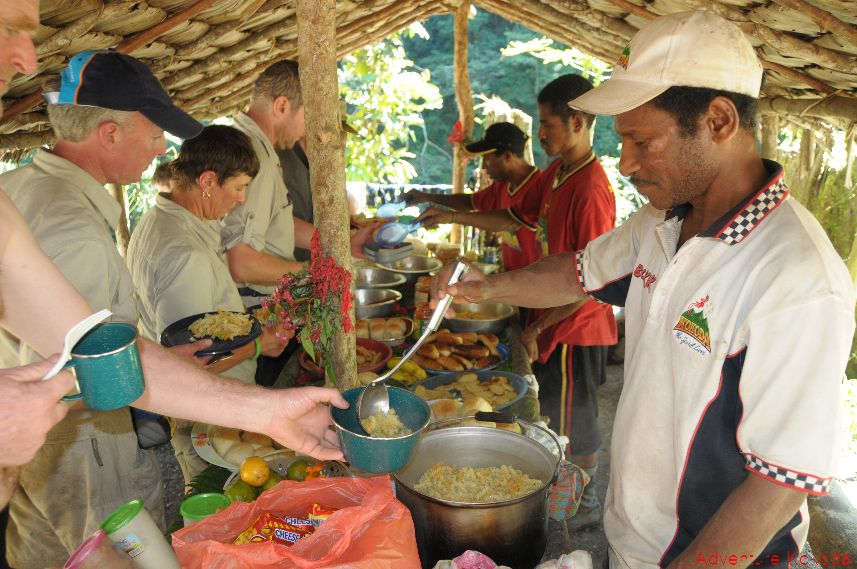
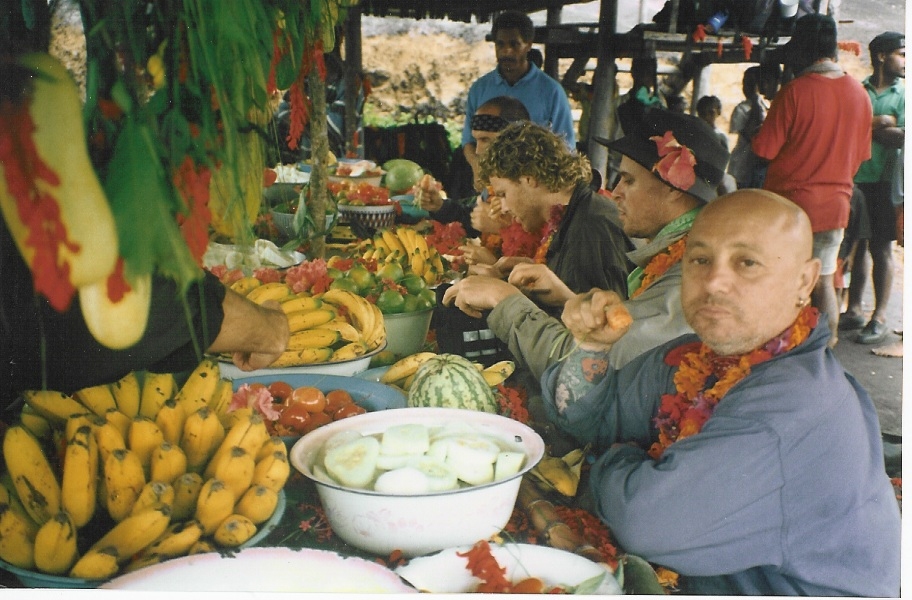
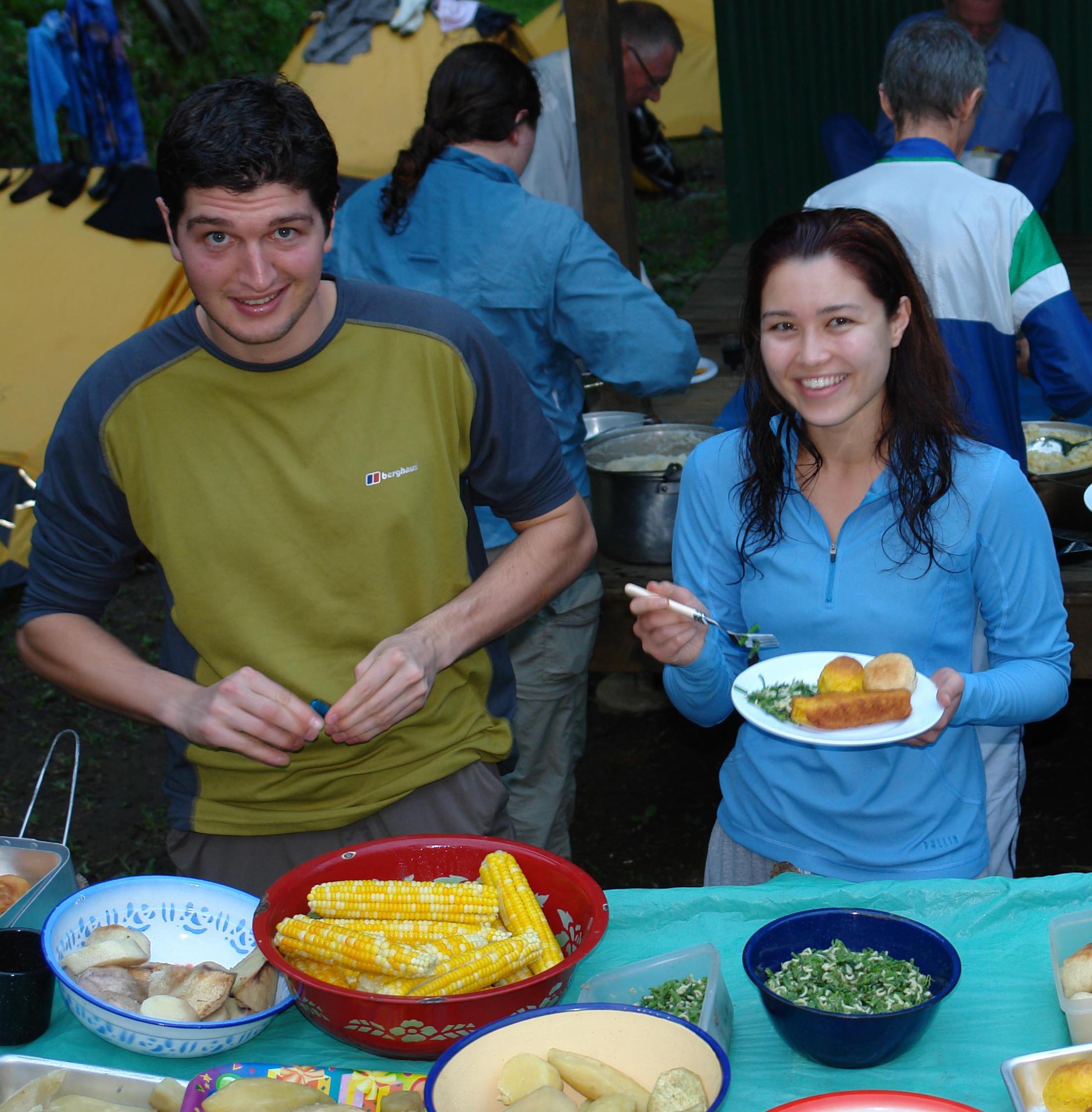

Most of the emergency evacuations from the Kokoda Trail are caused by gastro problems which cause severe vomiting and diarrhoea leading to dehydration - the most likely source of this condition is contaminated food cooked and served by villagers. This is why we carry ALL of our food with our trek groups.
The Kokoda Track Authority (KTA) is a PNG Government 'Special Purpose' body administered by the Minister for Provincial and Local Level Government Affairs.
Unfortunately the employment of officials without any commercial management qualifications or experience has led to gross incompetence, poor governance, and corruption.
The KTA has not published a financial report for more than 10 years - most of the money they collect for trek permit fees now circulates in Port Moresby will little reaching village communities across the Trail.
They have not updated their official website since 2012 – it is no longer a source of reliable information.
They no longer conduct due-diligence checks when issuing tour operator licenses – as a result most Kokoda tour companies do not comply with the Investment Promotion Authority (IPA) and are therefore operating illegally in PNG.
They do not require local PNG operators to have any form of Public Liability Insurance policies.
Trekkers should therefore be aware of the rule of 'Caveat Emptor' i.e., 'Let the Buyer Beware' when selecting a Kokoda tour company to lead them across the Kokoda Trail.
LINK: The Kokoda Track Authority
We contract PNGs premier air charter operator, TropicAir to fly our trekkers directly into and out of Kokoda.
We do not try and cut costs by using scheduled flights into the Oro Provincial capital at Popondetta, then subject trekkers to a bumpy 90 km ride in the back of a truck to get to Kokoda.
Scheduled flights into Popondetta are notoriously unreliable and often result in tour companies arriving into Kokoda after dark then having to reorganise themselves for a 3-hour night trek to their first campsite at Deniki.
The villages along the Trail are Seventh Day Adventists. They are vegetarian, don't drink alcohol, and strictly observe their Sabbath between 4.00 PM on Friday and 4.00 PM on Saturday each week. They also have two church services in each village each day - one at 6.00 AM and one at 6.00 PM and most of Saturday. Trekkers are asked to respect these religious protocols and proceed quietly through any village observing the Sabbath.
Meet the Trek Leaders
Major Charlie Lynn OAM OL - Director, Adventure Kokoda
In 2015 Charlie was inducted as an Officer of the Logohu by the Government of Papua New Guinea in their New Years Honours and Awards list 'for service to the bilateral relations between Papua New Guinea and Australia and especially in the development of the Kokoda Trail and its honoured place in the history of both nations' over the past 25 years.' More..
Peter Morrison
Peter Morrison is an unassuming young Australian. He first trekked with Adventure Kokoda almost a decade ago and developed a strong desire to learn more about the campaign and the people he met along the trail. Peter is a professional boxer and former NSW Welterweight Champion. More..
Dave Sherry
Dave began exploring Australia as soon as he was old enough to escape Sydney. He was born in the city but his heart was in the bush and he now lives on a farm just outside the western country town of Horsham. There are few places in Australia that Dave hasn’t trekked on foot or explored in off-road vehicles. He even took to the sea as a crew member on the Tall Ship HMAS Bounty during the Bicentenary in 1988.
Dave first trekked Kokoda in 2006 and began leading expeditions across the trail in 2011. He has now led more than 35 groups across the trail. More..
Jake Leske
Australia’s Honey Bee. Former Navy sailor, Jake Leske, is more than an outstanding Kokoda trek leader, he is Australia’s original ‘Honey Bee’ and a remarkable endurance athlete. Jake first trekked with Adventure Kokoda to learn more about the Kokoda campaign. He returned as a volunteer 2IC and later led his first trek. More..
Peta Bull
Peta is an extremely passionate and natural trek leader who takes pride in educating trekkers about the Kokoda Campaign. Her passion was ignited when she first trekked Kokoda with her Uncle and Father. Peta was quick to develope a good relationship with the villagers along the Trail and our Guides and Carriers have the utmost respect for her. More..
Angelo Tsirekas
Angelo first trekked Kokoda in 2010 and has since trekked it another 10 times with groups he has recruited from the Canada Bay Area. He has been 2IC to Charlie Lynn on his recent treks and has now stepped up to be a trek leader.
He is a former Board Member of the Kokoda Track Memorial Walkway in Concord and was instrumental in establishing the 'Rusty Priest Kokoda Scholarship Program' with students from Rosebank College.
Jesse White
Jesse has recently joined our Adventure Kokoda leadership team and comes with outstanding credentials. After visiting PNG over 10 years ago he formed a strong connection with the people, culture and history.
He served as a rifleman with the 2nd Battalion, Royal Australian Regiment, completing multiple specialist courses and multinational exercises, including a deployment to Timor-Leste as part of the International Stabilisation Force. More..
Kerry Symes
Kerry brings a wealth of knowledge to our leadership team due to his success in senior management in PNG over a 10 year period. He has a Graduate Diploma in Strategic Leadership and was previously employed as the Operations Manager of PNGs major fuel distributor which took him around the country. More..
Gerhard Hattingh
Gerhard grew up on cattle stations in the Gulf country and is a natural bushman. He joined the Army in 2000 where he served for 21 years.
He was a specialist Sergeant Gunnery Instructor in the Royal Australian Armoured Corps where he taught soldiers to employ and fight armoured vehicles.
He later transferred to the Australian Army Aviation Corps where he was engaged as an aircrewman and loadmaster in Taipan helicopters. He completed jungle survival courses as part of his qualification for this role. More..
Captain Reg Yates
Over the past 34 years Captain Reg Yates has explored most of the WW11 battlesites in PNG. He is fluent in Tok Pisin and is well respected by village elders along the Kokoda Trail. More..
Major Craig Moffat OAM
Craig joined the Australian Army in 1979 and was posted to the Royal Australian Infantry Corps where he has served for 40 years with over 20 years serving in Special Operations Command as a Commando.
Craig has seen regimental service as a soldier and officer rising through the ranks within The Royal Australian Regiment and Special Operations Command, his career culminated as soldier with two Regimental Sergeant Major (RSM) appointments prior to commissioning to officer in 2005. More..
Peter Davis
Peter served in the Army Reserve for 7 years and has two grandfathers who served in both World Wars - one being a highly decorated soldier. Peter recently graduated with a MPhil in Military History with the Australian Defence Force Academy and is now studying for his PhD. More..
Warrant Officer James 'Max' Walker
James ‘Max’ Walker (first trek with Adventure Kokoda Aug 2018 – 2IC Apr 2024).
Max Walker is a former career soldier who first joined the Australian Regular Army as a young apprentice.
During his service, Max was posted to the United Nations in Cambodia and deployed to the Republic of Narau prior to the establishment of the Australian offshore immigration detention facility. More..
Tau Maguli - Quartermaster
Tau Maguli is our PNG Quartermaster with an enormous task, he coordinates the allocation of 350 of our PNG guides and porters to ensure each trek has an equal number from each village across the Trail and each one gets at least six (6) treks a year. More..
Tracie Watson - General Manager
Tracie is the General Manager and engine room of Adventure Kokoda - she is on-call 24/7 and will look after your every need and concern from the moment you book your trek until you arrive back in Australia. More..
Bernie Rowell
Bernie is a Kokoda tragic. He first trekked with Kokoda to honour his father who served in New Guinea during the war. He has since trekked it 55 times. Bernie has transposed his success in business to his passion for leading treks across the Kokoda Trail. More..
Major Chad Sherrin MM
Chad is a decorated Vietnam veteran - he was awarded the Military Medal for bravery in action. Chad first joined the 8th Battalion, Royal Australian Regiment (8 RAR) as a tracking dog handler. He was promoted through the ranks to Sergeant while serving with 8 RAR and served with the Battalion in Malaysia and South Vietnam. More..
Lieutenant Colonel Rowan Tracey LLB BA
Rowan is a pioneer of the Kokoda Trail. He first trekked it 30 years ago when he served with the PNG Defence Force. He is fluent in the local language 'Tok Pisin'. Rowan is a military historian and is acknowledged as the most eminent authority on the strategy and tactics of the Kokoda campaign. More..
Commodore Simon Hart CSC MSc MA
Simon joined the Australian Navy a Cadet Midshipmen in 1973 and carved out an outstanding career spanning 33 years. He specialised in maritime surface ship operations and spent the majority of his career at sea. More..
John Nalder
Prior to John joining Adventure Kokoda he used to wrestle crocodiles with Steve Irwin. John is a qualified para-medic and expert bushman. He has a deep emotional commitment to Kokoda and the veterans he has met over the years. He is a keen student of the Kokoda campaign. More..
Joe Uwea - Chief Guide
'Big Joe' as he is fondly known is the Chief PNG guide for Adventure Kokoda.
'Big Joe' has been trekking across the Kokoda Trail for almost 20 years and is fast approaching his 100th crossing.
He has earned the respect of his Koiari and Orokaiva counterparts during this period. He is a man of few words but there is no doubt about his authority along the trail. He is well-known and highly respected by all village elders and community leaders. More..
Why Trek with Adventure Kokoda
Our primary goal is to lead you safely across the Kokoda Trail and ensure you have an unforgettable wartime historical and cultural experience.
Charlie has led 101 expeditions across the Kokoda Trail over the past 32 years.
He previously served in the Australian Army for 21 years. During this time he saw active service in Vietnam; was assigned to the joint Australian, New Zealand and British (ANZUK) Force in Singapore/ Malaysia from 1970-72, and as an exchange instructor in Airborne Logistics with the United States Army from 1977-78. He is a graduate of the Army Command and Staff College.

